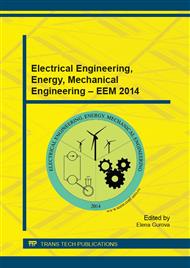p.226
p.231
p.237
p.245
p.251
p.258
p.264
p.273
p.277
Numerical Calculation of Temperature and Microstructure for Induction Surface Hardening
Abstract:
In the present paper, a new numerical model for calculating martensite microstructure in induction surface hardening processes is introduced. It takes into account the heating as well as the quenching process and uses the temperature history of a work piece to calculate martensite formation. The calculation is based on an empirical equation found by Koistinen and Marburger [1].A comparison between the heat distribution within a work piece at the end of the heating process and the distribution of martensite after quenching is performed for different process parameters. Thus, it is determined, in which case the temperature distribution is sufficient to predict the hardened layer and in which case the microstructure has to be calculated to receive accurate results. The model is verified by comparing simulation results with different experiments.
Info:
Periodical:
Pages:
251-257
Citation:
Online since:
December 2014
Authors:
Price:
Сopyright:
© 2015 Trans Tech Publications Ltd. All Rights Reserved
Share:
Citation:


